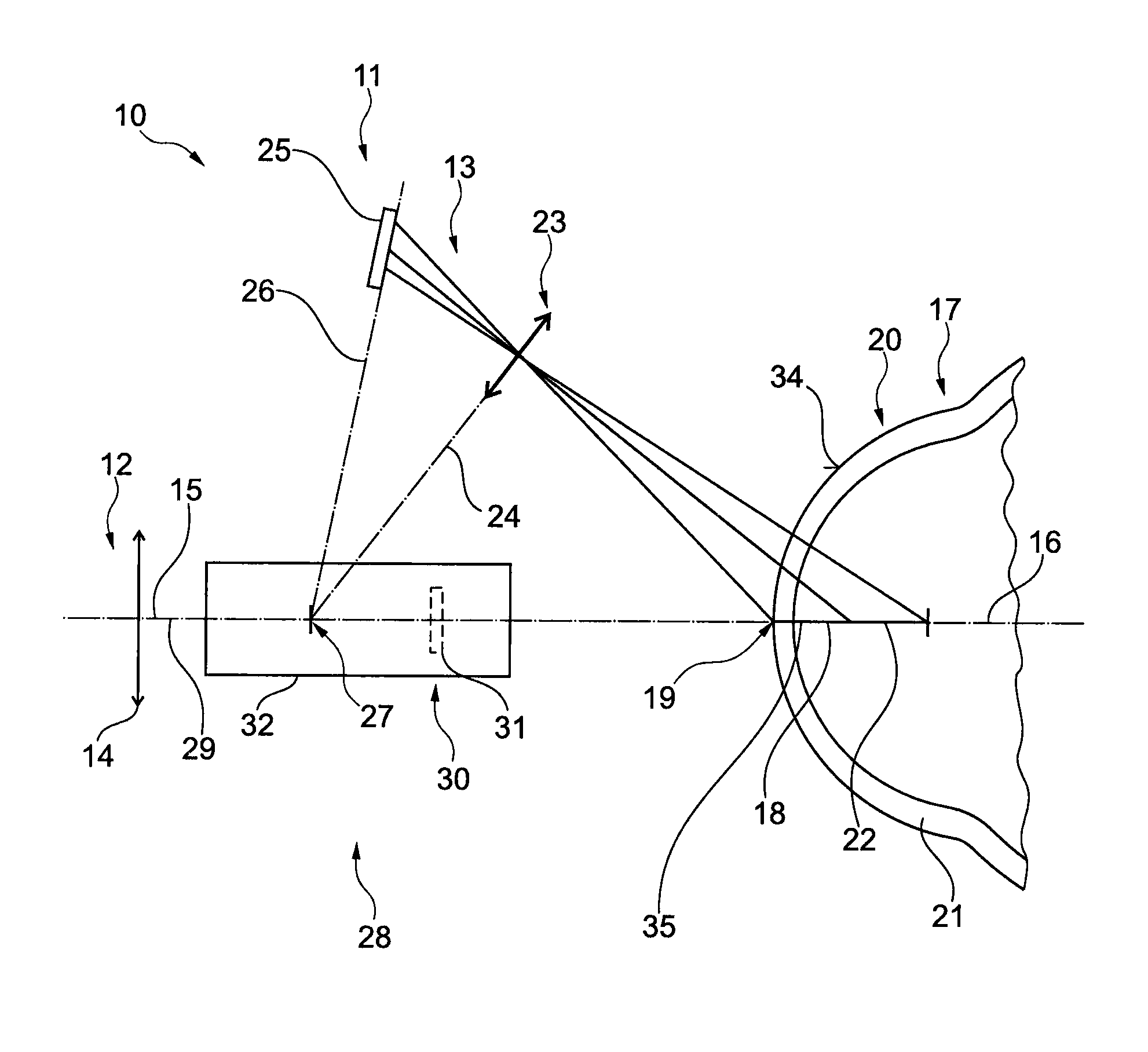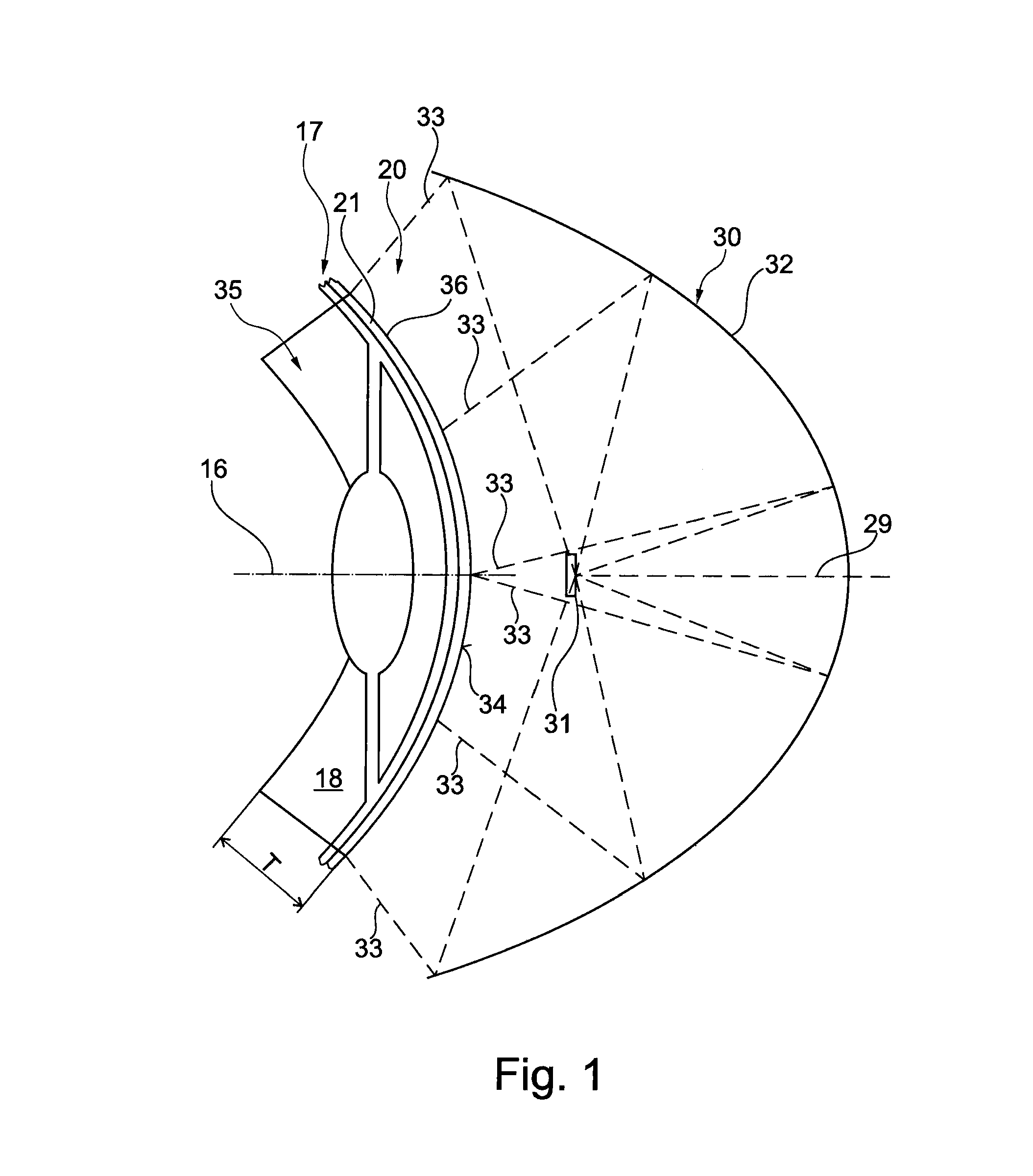Method and analysis system for eye examinations
a technology of ophthalmological analysis and eye examination, applied in the field of eye examination, can solve the problems of falsification of measurement, inability to obtain image record directly, and inability to measure eye length with comparable accuracy, and achieve the effect of high resolution of eye region
- Summary
- Abstract
- Description
- Claims
- Application Information
AI Technical Summary
Benefits of technology
Problems solved by technology
Method used
Image
Examples
Embodiment Construction
[0041]The basic structure of an ophthalmological analysis system 10 can be taken from FIGS. 4 and 5. A first analysis system 11, which is partially illustrated here, of the ophthalmological analysis system 10 is formed from a projection device 12 and from a monitoring device 13. As regards the projection device 12, only an objective lens 14 is schematically indicated here, through which objective lens a beam path 15 of a slit illumination, which is not illustrated in more detail here, is projected onto the eye 17 along a visual axis 16 of an eye 17. In FIGS. 4 and 5, the beam path 15 of the slit illumination runs in a recording plane 18, such that the slit illumination or the recording plane 18 runs horizontally and orthogonally relative to a viewing plane of FIG. 4 or parallel to a viewing plane of FIG. 5. The beam path 15, in the region of an apex 19 of the eye 17, enters a front eye section 20 having a cornea 21 of the eye 17, which cornea is schematically illustrated here, and p...
PUM
 Login to View More
Login to View More Abstract
Description
Claims
Application Information
 Login to View More
Login to View More - R&D
- Intellectual Property
- Life Sciences
- Materials
- Tech Scout
- Unparalleled Data Quality
- Higher Quality Content
- 60% Fewer Hallucinations
Browse by: Latest US Patents, China's latest patents, Technical Efficacy Thesaurus, Application Domain, Technology Topic, Popular Technical Reports.
© 2025 PatSnap. All rights reserved.Legal|Privacy policy|Modern Slavery Act Transparency Statement|Sitemap|About US| Contact US: help@patsnap.com



